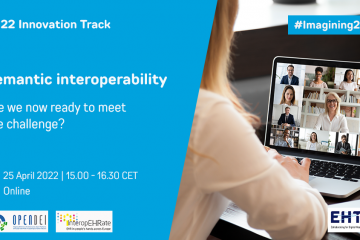2nd External Stakeholder Board meeting
The External Stakeholder Board of InteropEHRate had its second meeting virtually on 24 November 2020[1]. It convened representatives of both the IT industry and implementation agencies of the public sector – some of them being also active in standardisation – to reflect with the consortium on what needs to be done to facilitate the technical adoption of the open specifications developed by the project.
After a short status-quo presentation [link to Francesco’s presentation], the meeting reflected on a few topics.
A reference was made to the concept of LOOST (Legal, Operations, Organizational, Semantics and Technical) as a requirement to enable systems to interoperate, hence to enable the integration of the InteropEHRate outputs into the digital health infrastructure of those organisations seeking to make personal health data available for download on smartphone and sharable under citizens’ control. It was also highlighted that standardising data and protocols and enabling workflows to interoperate were two very different processes. The question for InteropEHRate to consider is therefore “Should the project consider other aspects of the LOOST interoperability model than the semantic and technical ones as well as the security and privacy elements of the legal one?”.
It was also underlined during the conversation that if FHIR is successful nowadays, it partly thanks to the massive involvement of implementors. The question for InteropEHRate to consider is therefore “How to engage implementors and developers of open source communities to use the project outputs?”
Thanks to the participation of NICTIZ in the meeting, the MedMij Trust scheme[2] has been used as a potential use case for InteropEHRate.
It was made clear that the compliance of the IEHR specifications to the MedMij specifications should be certified in order for MedMij to consider adopting them. NICTIZ offered support to help InteropEHRate assessing the MedMij requirements.
MedMij was again used as a potential use case when reflecting on incentivizing citizens in being control of their health data. Indeed with MedMij, each citizen can obtain freely an app paid for by the government. The Netherlands Patient Federation was presented as a powerful actor to also incentivize the population. It was observed that in the Netherlands, no mechanism was put in place for incentivizing the development of apps and other digital health services.
It was also explained that with MedMij, citizen’s identity was still a legal issue: the national ID cannot be used to request data from the hospital. It’s the responsibility of the hospital to do the mapping. This may be something for InteropEHRate to consider since eIDAS is an element of the InteropEHRate architecture.
Some general observations were also made about digital literacy issues as well as about the diversity that exists among Member States about data governance.
[1] A report on the first meeting is available at https://www.interopehrate.eu/blog/2019/11/16/first-interopehrate-external-stakeholder-board-meeting-in-berlin/
[2] MedMij is a national brokerage system: developers take the data from the general practitioners’ offices and provide them to the citizens.


